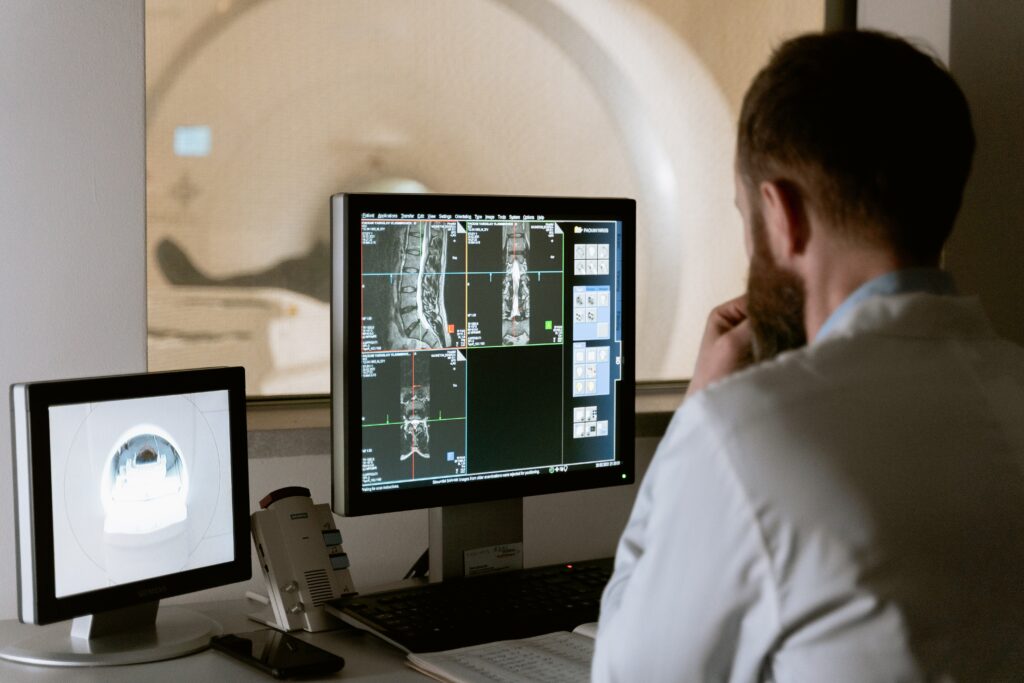Paget’s disease is a disease of bones that occurs due to the erroneous breakdown and reforming of new bone which finally results in fragile, weak, structurally abnormal, and misshaped bones.
The disease can affect the bones of the pelvis, the legs, the skull, and the spine more commonly although it can affect any bone throughout the body.
Risk Factors

- Age – People who are older than 50 are most likely while increasing age predisposes to have an increased risk of disease.
- Women are more commonly affected than men in a proportion of 3:2
- National origin. Paget’s disease of bone is more countries settled by European immigrants while being uncommon among Scandinavians and Asians.
- A family history of a blood relative with Paget’s disease shows an increased risk for you also to get the disease.
Causes for Paget’s Disease
- Many genetic changes which can be due to familial predisposition or environmental factors can cause the disease.
- Viral infections are also known to predispose you to get the disease while the exact cause is not yet identified properly.
Signs and Symptoms
- Most patients (around 80%) are asymptotic at the time of diagnosis.
- Bone pain is most often in the pelvis and spine
- Joint pain when an involved join is closer to a join causing osteoarthritis in the joint
- Deformities in bones including bowed tibia and changes in the human skull
- Hip pain can occur due to a diseased hip joint
- Hearing loss or headaches can occur due to abnormal growths that occur in the skull
- Pain, tingling, and numbness in an arm or leg can be caused due to nerve compression from the effect of the disease on the spine.
- Legs can bow due to abnormal structural changes in leg bones.
- Enlarged and misshapen bones may cause extra stress on nearby joints leading to the development of osteoarthritis in the Knee and hip.
Complications
- Diseased bones can cause more fractures, deformities, and increased bleeding.
- Osteoarthritis can occur due to increased stress caused on joints by diseased bones.
- Neurological symptoms such as pain, weakness, and needles sensations can occur due to the compression of nerve roots by abnormal structural formations of diseased bones such as the spine.
- Bone cancer is also common among these patients
Diagnosis of Paget’s Disease
Initially, the patient will be assessed through history and examination. Special investigations such as X-Ray imaging, bone scan, and blood investigations will be done to confirm the diagnosis.

Management of Paget’s Disease
Mild diseases without many symptoms don’t require treatment, while treatment will be used in patients with active disease to reduce complications, reduce symptoms and improve quality of life.
Pharmacological Management
- Drugs used to treat osteoporosis called Bisphosphonates are the most common treatment for Paget’s disease of bone.
- Common bisphosphonates which are given intravenously include Zoledronic acid while oral Bisphosphonates include drugs such as Alendronate and Risedronate.
- As the next step in management, Calcitonin can be given which is a naturally occurring hormone involved in calcium regulation. It is essential for bone formation.
- As the final step, the patients can be treated by surgery to help fractures heal, replace damaged joints, and to reduce complications such as deformed bones.
Lifestyle Modification
- It is important to have a balanced diet, especially including adequate levels of calcium and Vitamin D.
- Regular exercise and increased physical activity can strengthen the bones and joint movements. But strenuous exercises must be avoided as they can make you more prone to get fractures.
- Preventing falls and ensuring safety at home to avoid flings by removing slippery floor covers and etc., is also vital to prevent fractures caused due to falls.
References
- Kumar and Clerk’s Clinical Medicine -8th Edition- Parveen Kumar, Michael Clark
- Oxford Handbook of Clinical Medicine – 10th Edition

